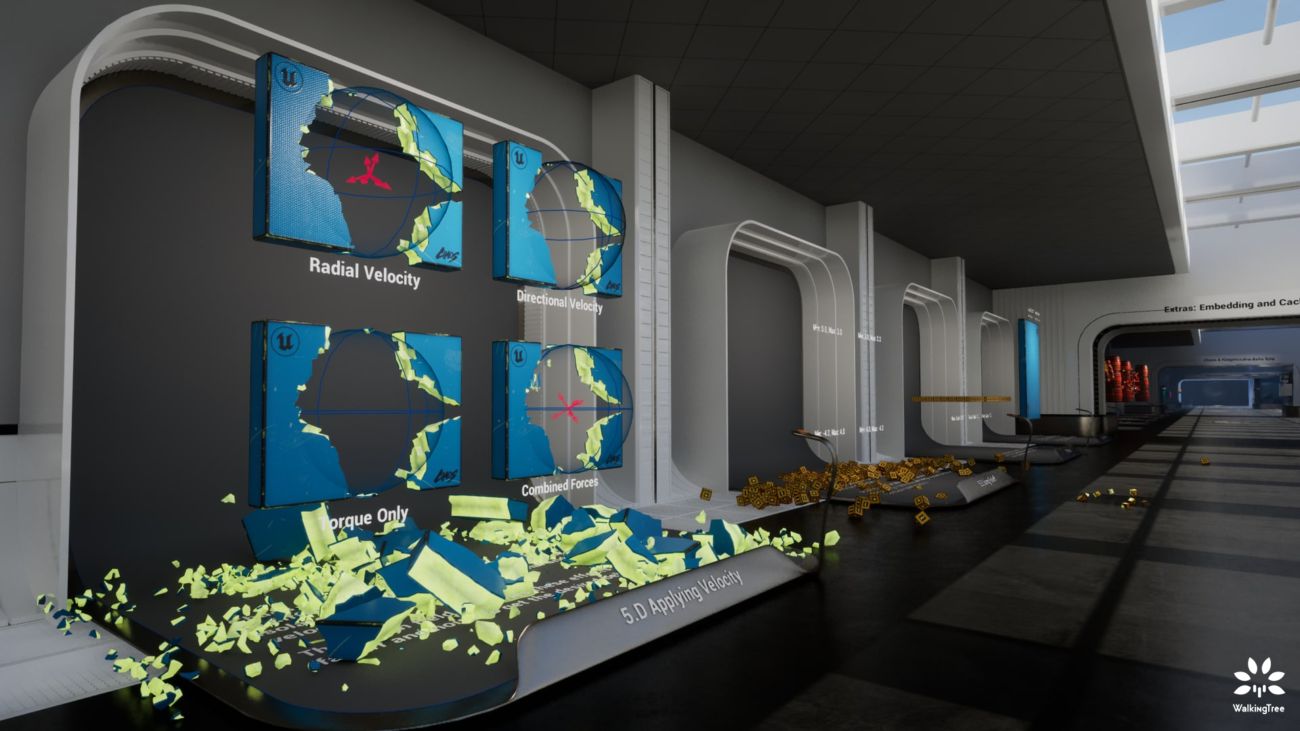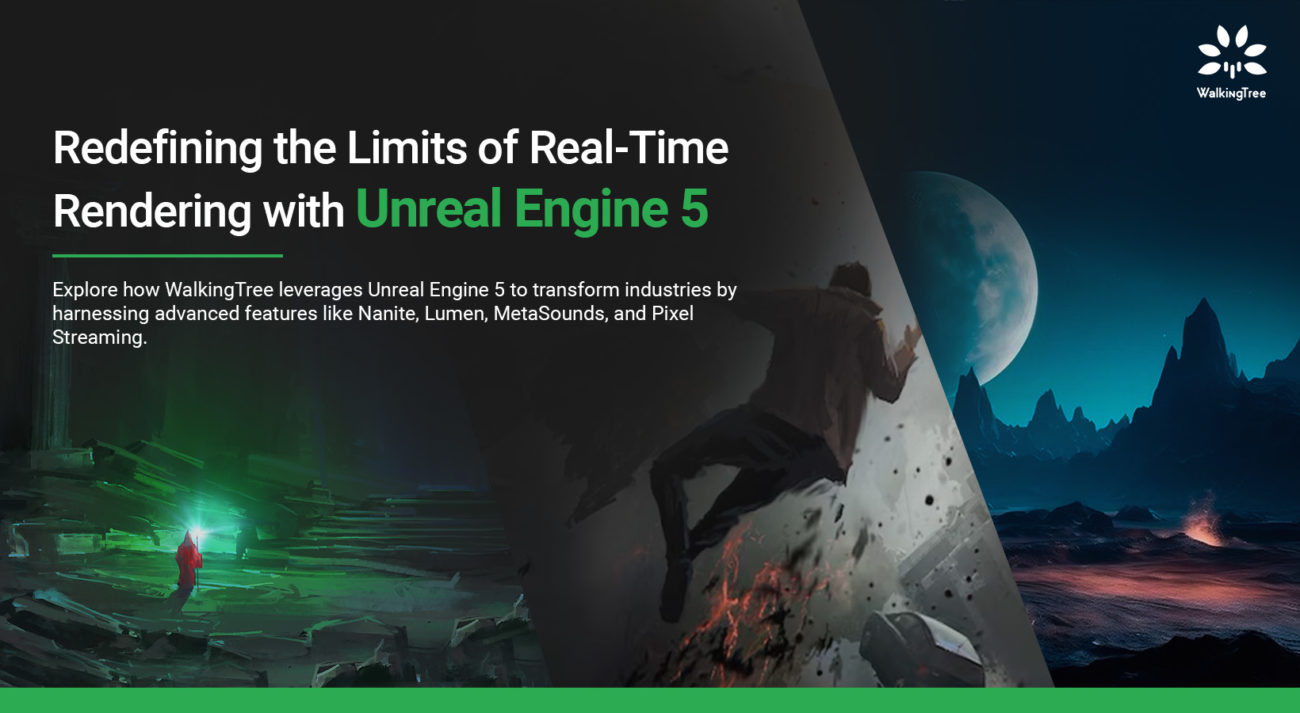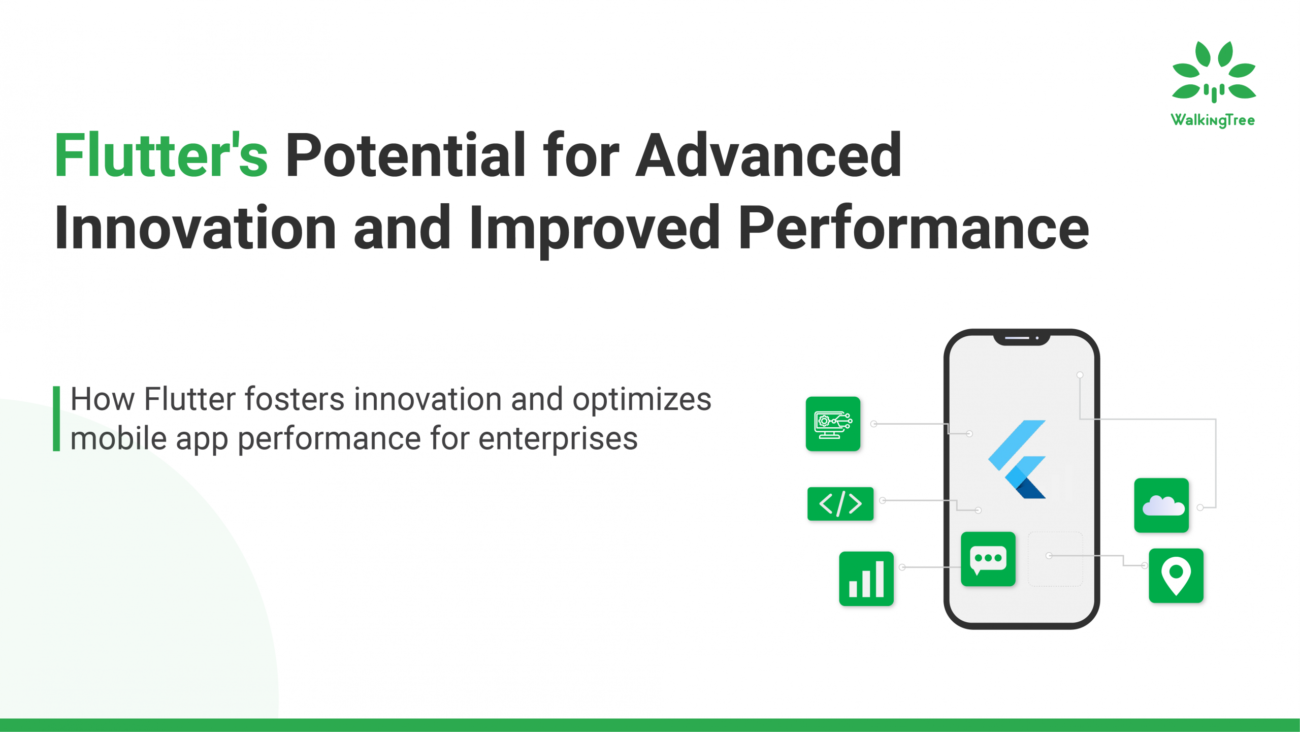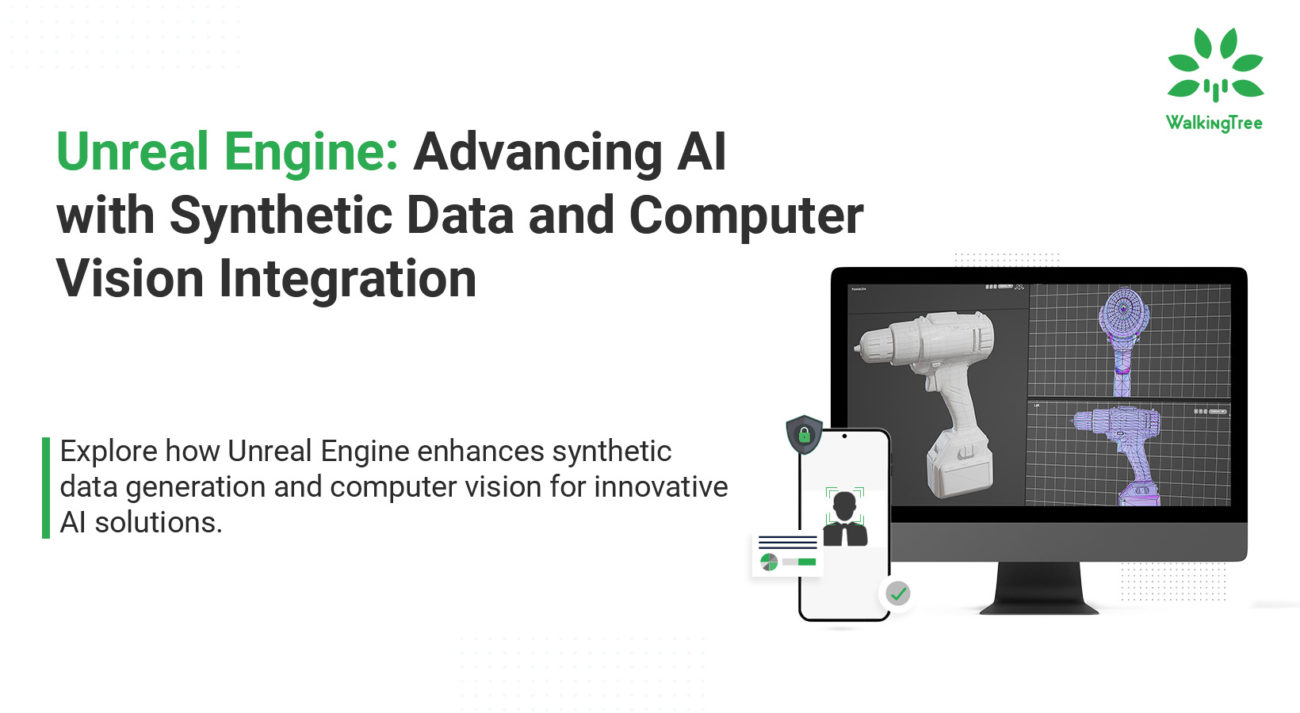
Blogs
Pixel Streaming with Unreal Engine: Advanced Architecture Explained
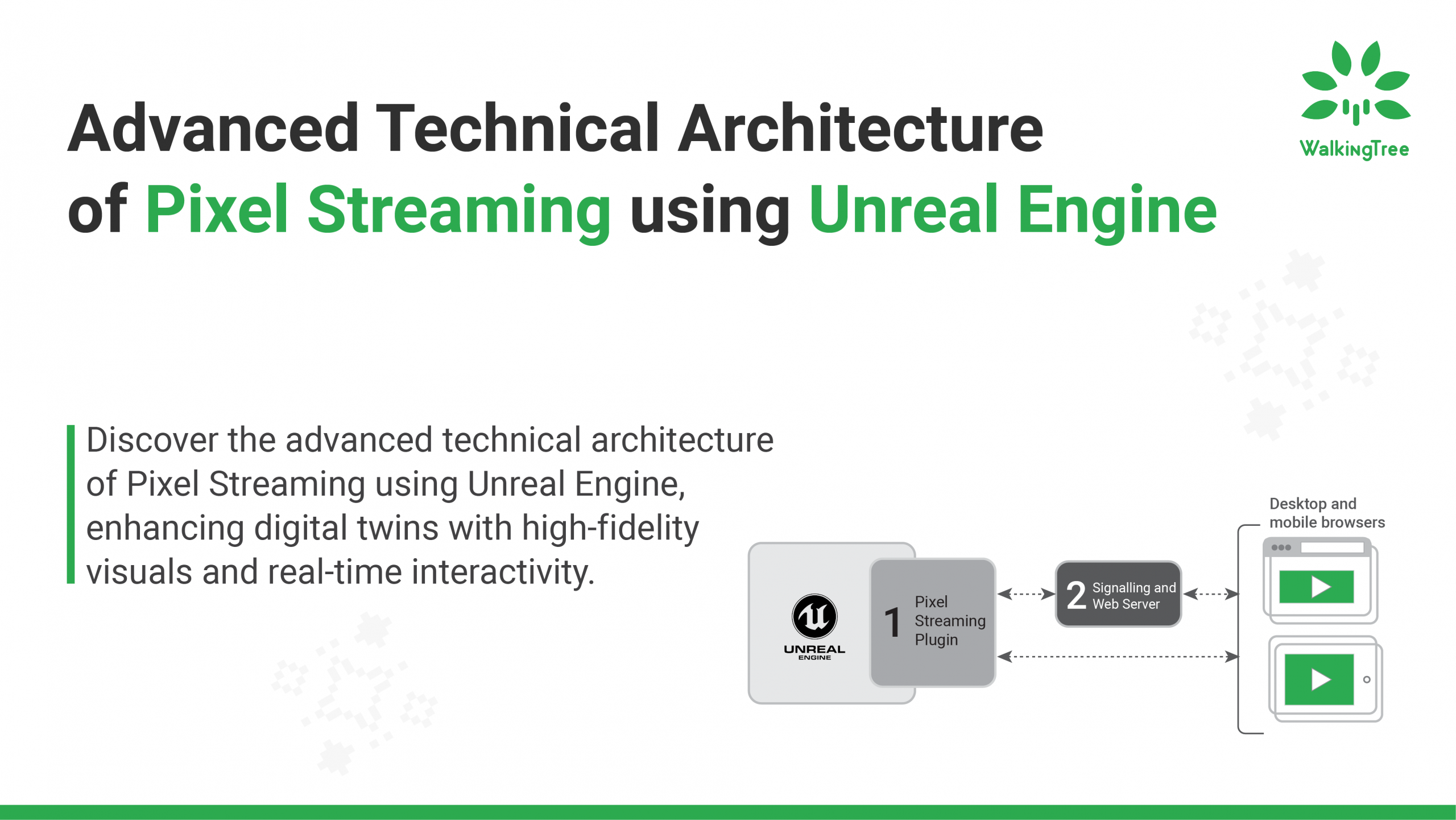
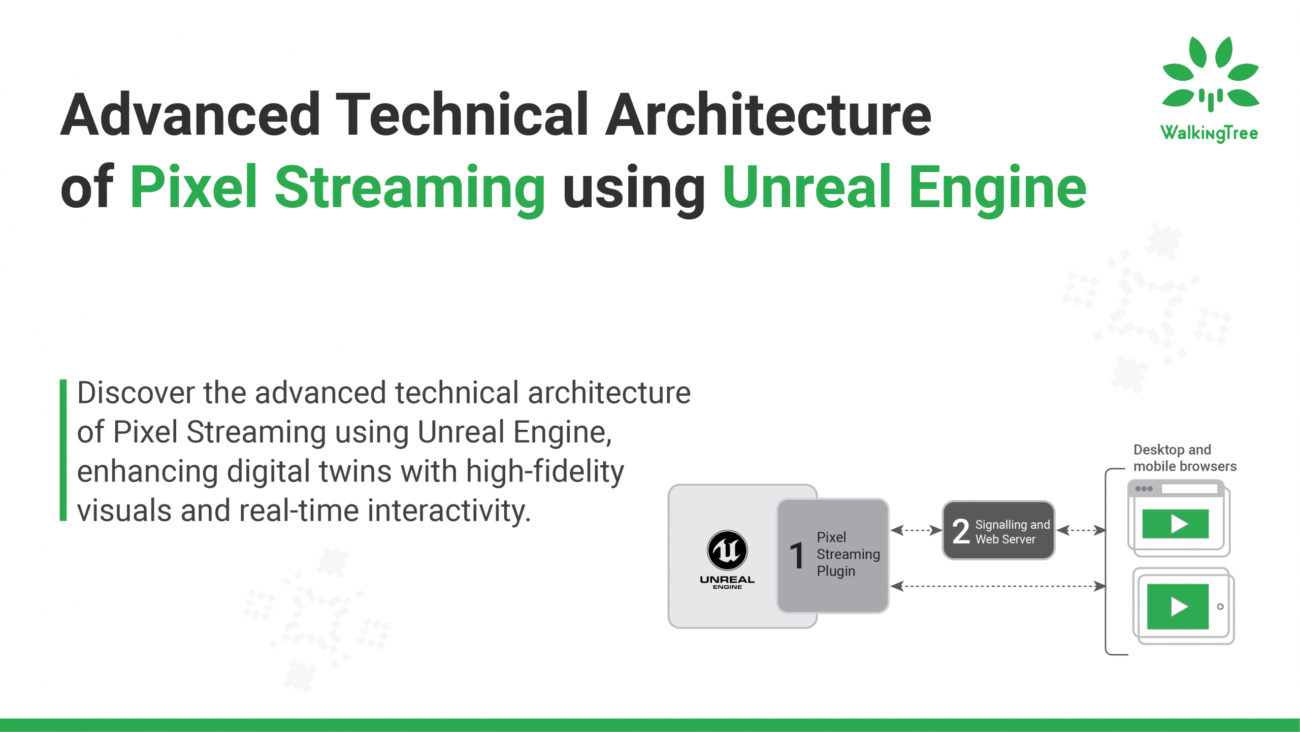
Pixel Streaming in Unreal Engine adapts server-side rendering to deliver interactive 3D content to end-users. In this process, a powerful server renders frames and streams them to the user’s browser, displaying them in real-time. The server receives user inputs (such as keyboard and mouse actions), creating a feedback loop that maintains interactivity.
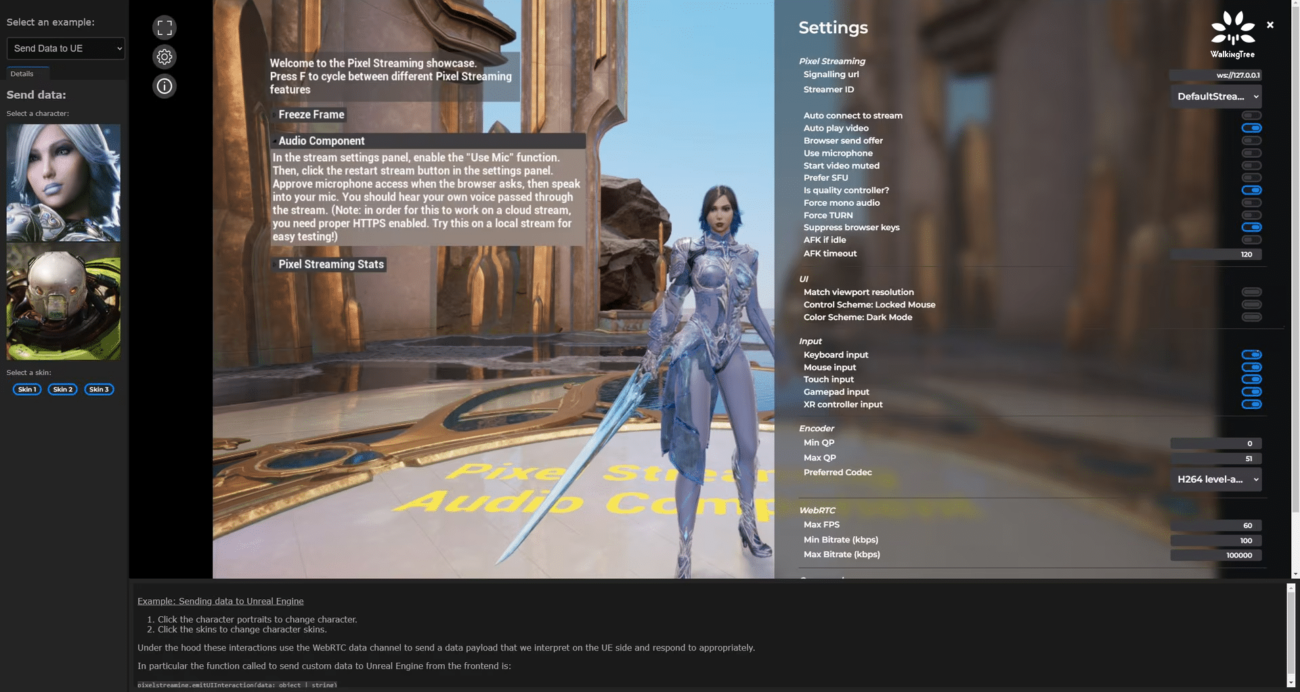
Additionally, Unreal Engine can generate synthetic data for training AI models, enhancing machine learning applications.
Key Components:
- Rendering Server: High-performance hardware that runs Unreal Engine and renders the 3D content.
- WebRTC Protocol: Facilitates the streaming of rendered frames and the transmission of user inputs. WebRTC is chosen for its low latency and ability to handle real-time communication.
- Signaling Server: Manages the initial connection setup between the client and the rendering server, facilitating the exchange of connection information necessary for WebRTC.
|Cloud Architecture for Pixel Streaming
Deploying Pixel Streaming in a production environment requires a robust and scalable cloud architecture.
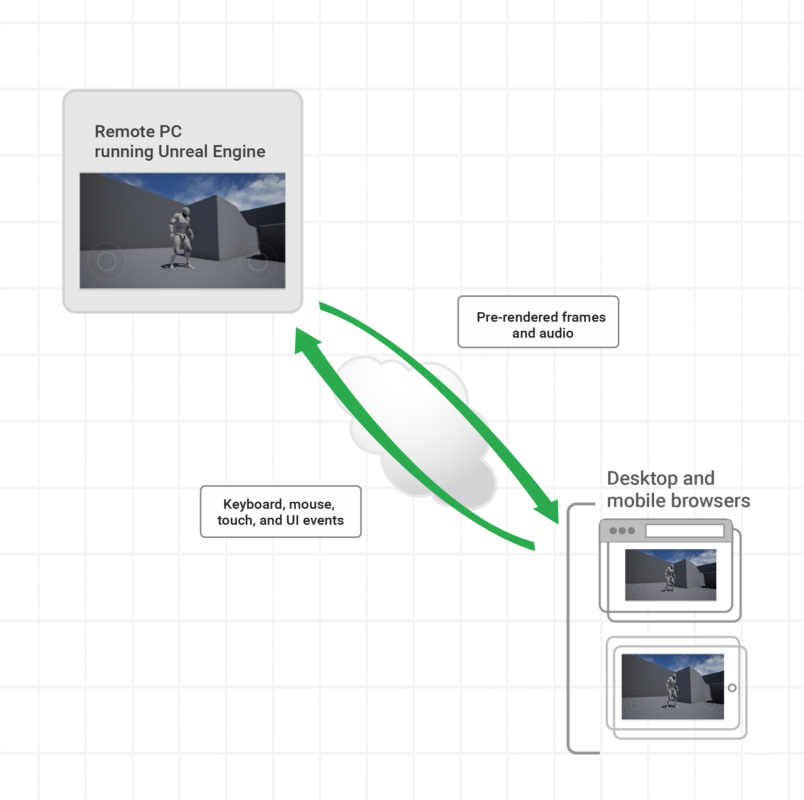 Here’s a detailed look at the key components and their configurations:
Here’s a detailed look at the key components and their configurations:
- High-Performance Servers:
- GPU Instances: Use cloud instances with powerful GPUs, such as NVIDIA Tesla T4 or V100, to handle the intensive rendering tasks.
- Instance Selection: Select instances based on the complexity of the 3D content and the expected user load. For example, Amazon EC2 G4 instances are well-suited for medium to high-fidelity graphics.
- Content Delivery Network (CDN):
- Latency Reduction: CDNs cache and deliver content from locations closer to the end-users, reducing latency and improving load times.
- Scalability: CDNs help manage high traffic by distributing the load across multiple servers.
- Load Balancing:
- Dynamic Scaling: Implement load balancers to distribute incoming user requests across multiple rendering servers. This ensures no single server becomes a bottleneck.
- Auto-Scaling: Configure auto-scaling policies to add or remove instances based on real-time demand, ensuring optimal resource utilization and cost efficiency.
|Reducing Network Latency
Minimizing latency is critical for maintaining a seamless user experience in Pixel Streaming.
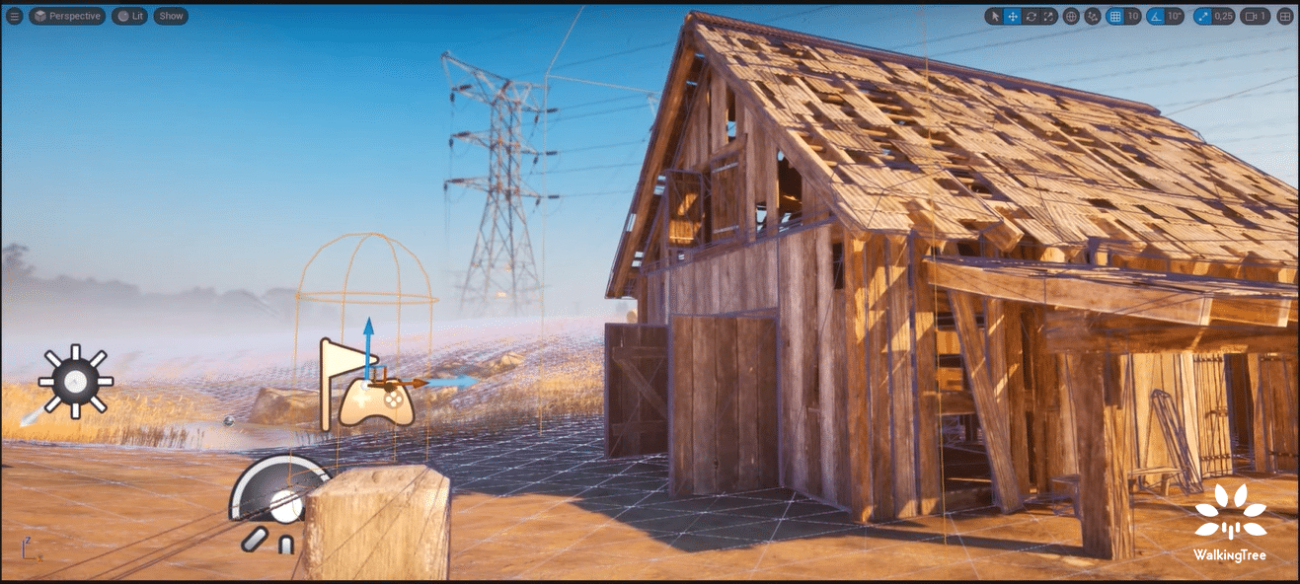
- Several strategies can be employed to achieve this:
- Server Proximity: Deploy servers in geographically dispersed data centers to ensure they are close to the end-users. Using services like AWS Global Accelerator can help route traffic to the nearest available server.
- Efficient Encoding: Utilize efficient video encoding algorithms (e.g., H.265) to compress the rendered frames without significant loss of quality. This reduces the bandwidth required for streaming.
- WebRTC Optimization: Fine-tune WebRTC parameters, such as buffer sizes and congestion control algorithms, to optimize for low latency. Adjusting these settings can significantly impact the responsiveness of the streamed content.
|Synthetic Data Generation for Enhanced Training
Pixel Streaming can also facilitate the generation of synthetic data for training AI models. By rendering various scenarios and environments in Unreal Engine, businesses can create extensive datasets without the need for real-world data collection. This synthetic data can be used to train machine learning models, improving their accuracy and robustness.
WalkingTree Technologies excels in utilizing Unreal Engine for synthetic data generation. Our expertise allows us to create realistic and varied datasets tailored to specific business needs, enabling enhanced AI training and development. Industries such as autonomous driving particularly value this capability, where they require vast amounts of varied data for training robust models
|Security and Privacy Considerations
Given the nature of data transmission in Pixel Streaming, addressing security and privacy is paramount. Here are some best practices:
- Encrypted Transmission: Use TLS (Transport Layer Security) to encrypt all data transmitted between the server and the client. This ensures malicious actors cannot intercept sensitive information.
- Access Control: Implement strong authentication mechanisms to verify user identities before granting access to the streaming content. Developers commonly use OAuth 2.0 and JWT (JSON Web Tokens) standards.
- Data Integrity: Ensure data integrity by using checksums and hashes to verify that the data has not been tampered with during transmission.
- Regular Audits: Conduct regular security audits and vulnerability assessments to identify and mitigate potential risks. Use tools like OWASP ZAP for automated security testing.
|Typical Use Cases
Pixel Streaming has a wide range of applications across various industries:
- Gaming:
- Server Configuration: Deploy dedicated GPU instances with high memory capacity to handle complex game environments. Use AWS G4dn instances for high-quality graphics rendering.
- User Interaction: Implement low-latency input handling using WebRTC’s data channels, ensuring a smooth gameplay experience.
- Virtual Events:
- Scalable Architecture: Utilize Kubernetes to orchestrate containerized rendering instances, enabling easy scaling based on attendee numbers.
- Interactive Features: Integrate real-time interaction features, such as chat and Q&A, using WebSockets to complement the 3D streaming.
- Interactive Training:
- High-Resolution Displays: Configure servers to support high-resolution outputs (4K or higher) for detailed training simulations. NVIDIA Quadro RTX cards are suitable for such high-fidelity requirements.
- Feedback Mechanism: Implement real-time feedback loops using WebRTC’s data channels to track and respond to user actions during the training sessions.
- Healthcare:
- Medical Simulations: Utilize Pixel Streaming for high-fidelity medical training simulations. Trainees can interact with 3D models of anatomical structures and perform virtual surgeries, enhancing their skills in a risk-free environment.
- Telemedicine: Enable remote diagnostics and consultations by streaming high-resolution medical images to specialists across the globe.
- Architecture and Real Estate:
- Virtual Tours: Provide immersive virtual tours of properties and architectural projects. Potential buyers can explore properties in detail without needing to visit them physically, making the process more efficient.
- Collaborative Design: Facilitate collaborative design reviews by streaming 3D architectural models to stakeholders, allowing real-time feedback and adjustments.
|Digital Twins and Industry Transformation
Pixel Streaming is crucial in creating digital twins—virtual replicas of physical objects, processes, or systems. Digital twins enable businesses to simulate, analyze, and optimize their operations in a virtual environment, leading to significant efficiencies and innovations. For instance, in manufacturing, digital twins can monitor equipment performance in real-time, predict maintenance needs, and optimize production processes. In urban planning, digital twins of cities can help planners model traffic flows, optimize energy use, and improve public services.
Understanding Digital Twins and Pixel Streaming
Digital twins leverage Pixel Streaming to provide high-fidelity, interactive 3D visualizations accessible from any device without the need for high-end local hardware.
Powerful cloud servers render complex 3D models and stream the output to users’ devices via web browsers. User interactions are sent back to the server, ensuring a seamless, real-time experience.
Applications in Various Industries
- Manufacturing: Digital twins in manufacturing can simulate and monitor production lines, identify bottlenecks, and predict maintenance needs. Pixel Streaming ensures these simulations are highly detailed and interactive, enabling better decision-making and process optimization.
- Urban Planning: Urban planners use digital twins to model traffic flows, energy consumption, and public services. Pixel Streaming allows these complex models to be shared and interacted with remotely, facilitating collaboration and real-time analysis.
- Healthcare: Digital twins of medical devices and patient-specific models can be used for training, diagnostics, and treatment planning. Pixel Streaming makes these detailed 3D models accessible to healthcare professionals without the need for specialized hardware.
Technical Advantages
Pixel Streaming provides several technical advantages ideal for implementing digital twins:
- Scalability: Utilizing cloud-based servers allows Pixel Streaming to scale and accommodate large, detailed models and multiple users.
- Low Latency: Technologies like WebRTC ensure low-latency streaming, crucial for maintaining interactivity and real-time feedback.
- High Fidelity: Advanced rendering techniques, such as ray tracing and Lumen lighting in Unreal Engine, ensure that the streamed content is of the highest visual quality.
|Enhanced Visualization Techniques
Pixel Streaming using Unreal Engine can deliver high-fidelity visuals, including advanced lighting techniques like ray tracing and Lumen lighting. Ray tracing allows for realistic lighting effects, including reflections and shadows, enhancing the visual quality of 3D environments. Lumen lighting provides dynamic global illumination, ensuring that light interacts with objects realistically. These technologies combined ensure that streamed content looks as good as or even better than locally rendered graphics, providing users with an immersive and visually stunning experience.
Scaled Foundations GRID Case Study
In a case study of Scaled Foundations GRID, a client of WalkingTree, Pixel Streaming was employed to deliver high-quality 3D visualizations to a broad audience. Here’s a technical breakdown of their implementation:
- Architecture: Used a combination of AWS EC2 instances with NVIDIA Tesla GPUs for rendering. A global CDN was integrated to ensure low-latency content delivery.
- Optimization: Employed custom WebRTC configurations to optimize streaming performance, achieving sub-50ms latency.
- Security: Implemented end-to-end encryption and multi-factor authentication to secure the streaming sessions.
Future Trends and Opportunities
Pixel Streaming is poised to evolve with advancements in cloud computing and networking technologies. Future trends include:
- Edge Computing: Deploying rendering workloads closer to the end-users using edge computing platforms to further reduce latency.
- AI Integration: Leveraging AI for predictive rendering, where the system anticipates user actions and pre-renders frames, ensuring even smoother experiences.
- 5G Networks: Utilizing the high bandwidth and low latency of 5G networks to improve the performance and accessibility of Pixel Streaming.
- Extended Reality (XR): Combining Pixel Streaming with XR technologies (AR, VR, MR) to create more immersive and interactive experiences. This can revolutionize fields like education, entertainment, and remote collaboration.
- Blockchain Security: Integrating blockchain technology for enhanced security and transparent data management. Blockchain can provide tamper-proof records of data transmission and user interactions, ensuring higher trust and reliability.
|Conclusion
Pixel Streaming using Unreal Engine offers a robust solution for delivering next-gen 3D experiences over the web. By leveraging advanced cloud architectures, optimizing for low latency, and addressing security concerns, businesses can provide high-quality, interactive content to a global audience. Join our upcoming webinar, “Pixel Streaming using Unreal Engine: Next-Gen 3D on the Web,” to dive deeper into the technical aspects and learn how to implement this technology effectively. Don’t miss this opportunity to stay ahead in the digital innovation landscape.
WalkingTree Technologies is at the forefront of implementing Pixel Streaming solutions, offering expertise in cloud architecture, network optimization, and synthetic data generation using Unreal Engine. Contact us to learn how we can help your business leverage this transformative technology.


